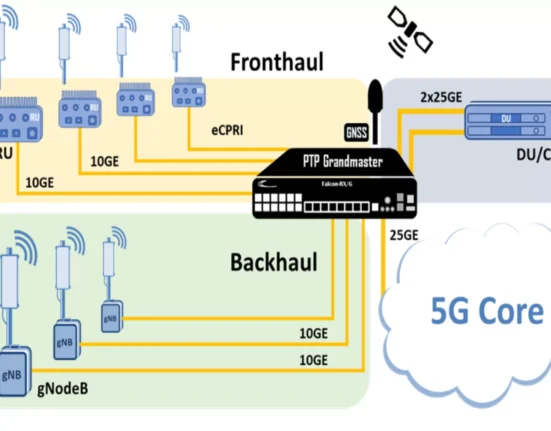The telecommunications industry is growing at an incredible pace. The rise of mobile and other connected devices is revolutionizing how we live and work. For those organizations looking for ways to leverage these changes into a competitive advantage, one of the best ways is to adopt an automated provisioning strategy.
Nowadays, UC is becoming a new way of communication for many companies. This communication helps reduce the employees’ burden and increase their productivity.
What Is Automated UC Provisioning?
User Provisioning is a core component of the user lifecycle. It allows organizations to define policies, procedures, and workflows for users’ creation, provisioning and deleting. Yet, manual user provisioning is time-consuming and inefficient. Automated user provisioning can significantly reduce the administrative overhead associated with this process. This ensures that every employee has access to the tools they need when they need them.
Automated unified communication (UC) provisioning is the automated process of setting up and configuring UC Applications. These include voicemail, unified messaging, and instant messaging. It goes beyond just provisioning users and devices with the correct settings. It also includes tasks such as:
- Configuring phone settings
- Routing calls to phones
- Adding users to groups
- Distributing network settings so that all devices can communicate with each other
The benefits of automated UC provisioning are clear, but why should every organization adopt this approach? The answer is simple: It’s the only way to keep up with the speed of business.
Here are some reasons why every organization should use Automated UC Provisioning.
1. Improved Security and Reduced Risk
The use of manual provisioning increases the risk of human error, while automated provisioning reduces that risk. With manual provisioning, each step requires an individual to complete a task, which can lead to a pile up of mistakes in the process. Automation takes care of this by automating all processes provisioning a user. This includes assigning voice numbers and email accounts and configuring softphone software.
Automated software provisioning can also improve security by reducing the chance of unauthorized access. When you have dozens of employees on your network, ensuring that each has been adequately vetted can be challenging before granting access to sensitive information or systems.
A single administrator can oversee all aspects of the process, whether working from home or on their mobile device. All they need is access to the internet and their computer or mobile device. This ensures that only authorized people have access to sensitive data and systems.
2. Eliminates Operational Inefficiencies and Improves Operational Excellence
With the advent of cloud-based unified communication (UC) platforms, the ability for organizations to provide their users with a consistent experience across different devices and locations is vital. However, manually provisioning these various systems can often be time-consuming and need significant resources. In addition, manual provisioning involves a high level of risk to ensure that all aspects of the process are properly configured.
Automated UC provisioning helps eliminate these inefficiencies. It provides a centralized platform where all settings can be configured once and easily deployed across multiple systems. This allows for greater consistency across applications, which improves user experience and satisfaction while reducing support costs.
3. Integrates UC With UC Management Systems for Faster Provisioning
The truth is that most organizations are using a manual provisioning process to deploy their UC systems. The problem with this approach is that it’s slow, error-prone, and can lead to increased costs in both time and money. Additionally, it doesn’t provide end-to-end visibility into what’s happening with the equipment throughout the entire process.
This is where automated provisioning comes in. Provisioning tools integrate with your unified communications system and manage all deployment aspects from beginning to end. They also integrate with other management systems in your organization. You can use one tool for everything from ordering new hardware to deploying applications on those devices.
4. Reduces Costs

UC has become the standard in enterprise communications. But what if you could get it on your terms? With automated UC provisioning, you can. Automated UC provisioning is a service that can be offered through the cloud or an on-premise solution. It allows you to set up your UC system without hiring an expensive team of engineers and technicians.
With an automated UC provisioning system, your organization can save money and time by reducing the need for costly consultants and engineers. You’ll also save money by eliminating additional hardware costs associated with traditional systems.
The ability to use any device for collaboration is another benefit of automated UC provisioning. Instead of being locked into one vendor with specific hardware requirements, you’re free to choose any device based on your needs and budget.
5. Streamlines Other Administration Tasks
The first time a user logs into your UC platform, a provisioning process is triggered that creates their account and configures the devices for them. This process is often manual and can be time-consuming.
Automated provisioning can streamline other administration tasks. It creates a more consistent user experience across multiple devices. Automated provisioning ensures employees receive an email when they join your organization. The email contains instructions on logging in and using their new device. It also allows IT to define policies like setting up voicemail or forwarding company emails to personal accounts.
With automated provisioning, you can also configure policies that prevent users from using personal apps while working on company devices. This ensures they use apps that support the corporate standards and security requirements.
In Conclusion
Automated provisioning is something that organizations should not overlook. Companies must realize that it can free up resources, reduce IT overhead and lower costs. Moreover, it makes for a better user experience for employees and customers.
With the right UC management tools, you can ensure that incoming calls are routed appropriately and quickly. This means you’ll have a more effective and efficient customer service experience, which can boost your business image.
The best part is that many UC management tools are available at little. This means organizations can get better call handling capabilities without spending a lot of budget on them. What are you waiting for?






